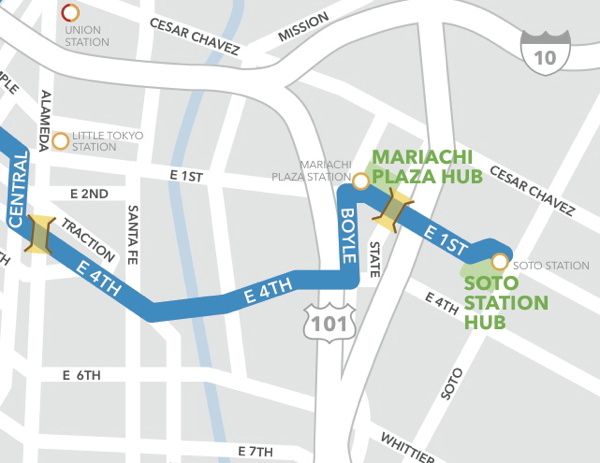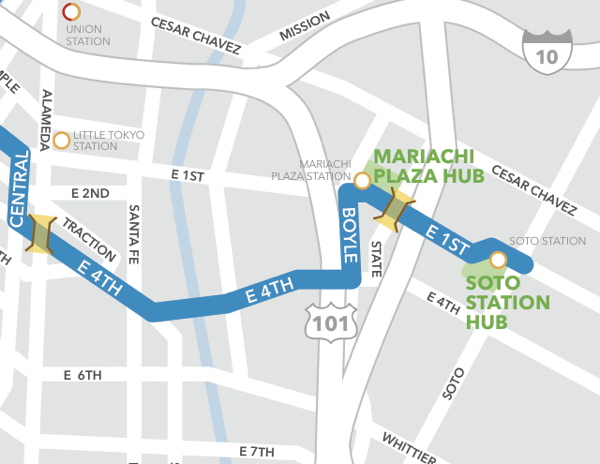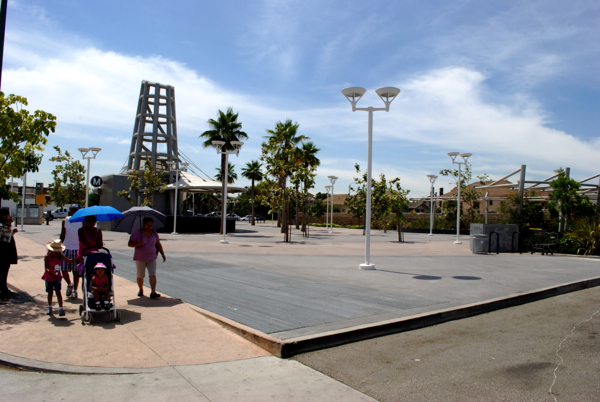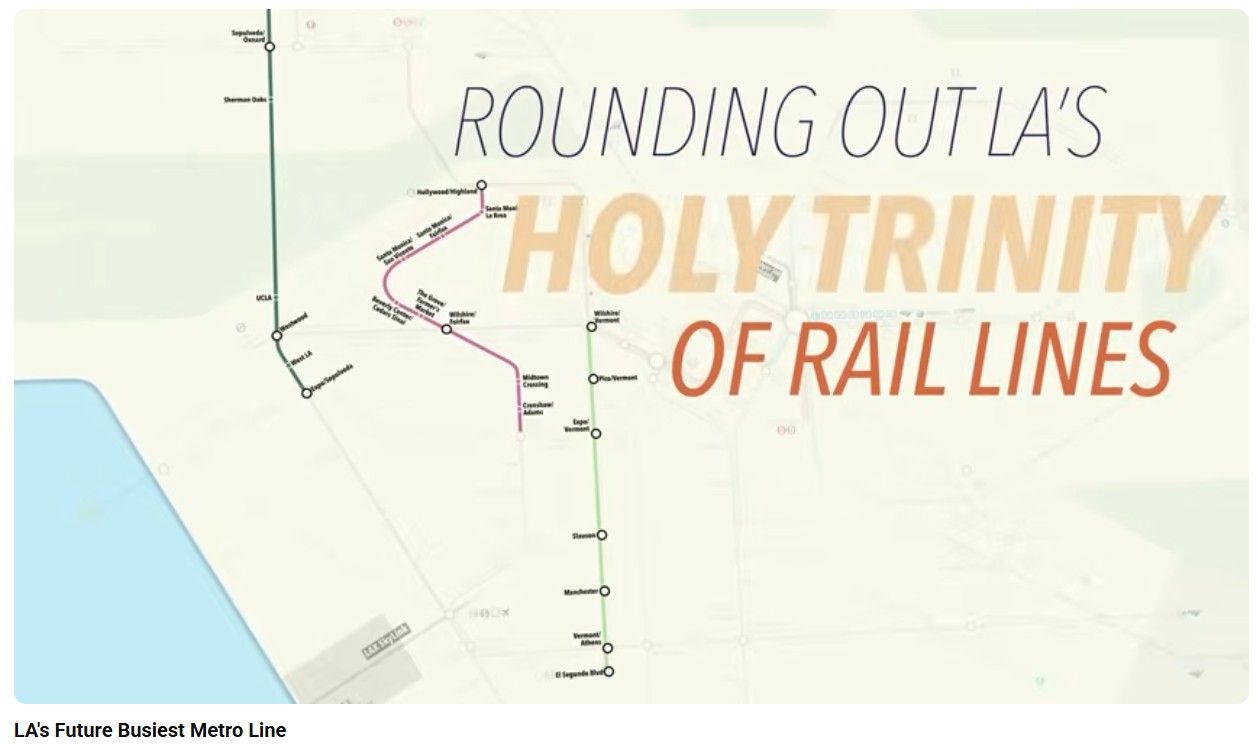
In the upcoming CicLAvia on October 7, the Boyle Heights route finally moved up to Mariachi Plaza, and goes down 1st Street to Soto Street. This is the first change to the Boyle Heights route since the car-free event started in 2010.
The current route goes into unfamiliar territory for CicLAvia, crossing Mariachi Plaza, the Boyle Heights Arts District, and ending at the Soto Street Gold Line station, one of the busiest intersections in Boyle Heights. The former endpoint at Hollenbeck Park was replaced with the Soto Street Station hub.
The first route map that was released over the weekend printed incorrectly that the route blocked off the intersection at Soto and 1st Streets. The map on flyers for April's CicLAvia showed the route incorrectly going up Boyle Avenue to Mariachi Plaza.
According to CicLAvia officials, though the outreach blueprint is still not developed for Boyle Heights, a meeting with community members is expected to take place later this summer. Streetsblog has reported that CicLAvia has had trouble garnering broad interest in Boyle Heights for community outreach volunteers.
While CicLAvia's draft for the October ride included an expansion to Evergreen Cemetery, CicLAvia officials said that there wasn't a proper space for a hub pointing to the hundreds of cyclists and pedestrians that stopped regularly at Hollenbeck Park in addition to the park regulars and other CicLAvia events. Also, they did not want to disturb the cemetery. Past extension plans included going as far as Whittier Boulevard, and also redirecting down Cesar Chavez.
"We have not abandoned plans to extend further east into Boyle Heights and then even further into East Los Angeles.," said Aaron Paley, CicLAvia organizer.
Residents had mostly positive reaction to news of the Boyle Heights extension. David Kippen, co-founder of Libros Schmibros used bookstore and lending library located at Mariachi Plaza, said in an email that his and many business and nonprofits on 1stStreet have looked forward to the extension.
“As one of them -- in our new home on Mariachi Plaza -- obviously I'm thrilled at a new chance to showcase Libros Schmibros and our neighbors.” Yet, CicLAvia Sunday was already Libros Schmibros busiest days, he thinks he might have to get creative in handling the new traffic. “Did somebody say sidewalk sale?”

Tonie Juarez, the manager of the International farmers market, which has street vendors and music every Sunday at Mariachi Plaza, said she would want CicLAvia traffic to pass through. “It would really help us out because people still don’t know that we are here,” Juarez said.
End of Hollenbeck reststop, addition of Soto Street Station Hub
The Hollenbeck hub has been a staple of CicLAvia since the first ride on 10-10-10.
The end of the Hollenbeck Park hub is in line with one of the biggest changes of the car-free event. Five of the six hubs from last April's CicLAvia are not on the route for the October event.
Some residents were sad to see Hollenbeck Park eliminated form the route. Artist and muralist Lilia Ramirez said that Hollenbeck Park already had an established drum circle, and environment that complimented the ride.
Juan Romero, owner of Primera Taza Coffee Shop said that at Hollenbeck Park, "people were able to do their stuff there and hang out.”
CicLAvia officials said the Hollenbeck hub was cut because keeping the Hollenbeck route and adding a new route to Soto Station would box residents in their homes.

The new end point at 1st and Soto Streets replaces a park view with one of the busiest intersections in Boyle Heights. Unlike Mariachi Plaza, which boasts weekly farmers markets, and a bustling arts district, Soto Station hub is usually filled by public transit commuters and passersby.
Romero said that a good idea would be to have music, or a concert at the Soto Street Station, so it can draw people from the ride and the local area. The 35-year-old Evelyn Abrego, who was waiting for a bus at the 1st and Soto Streets intersection said that since she doesn’t work on Sunday’s, the route wouldn’t affect her commute to or from work.
While restaurants have been the beneficiaries of CicLAvia, the informal economy that makes a large portion of Boyle Heights might find it difficult to turn a profit. Julio Martinez sells undergarments like underwear, socks, and undershirts from the back of his minivan some days in front of Laundromat parking lot a block west of the Soto Street Station. Martinez said that he would be interested in trying to sell his products during CicLAvia, but wouldn’t go if there would be too many people.
Yet, an older woman, who did not wish to be identified, waiting on 1st Street for a bus said that even though the route would near one of the busier intersections in boyle heights, that the traffic could wait. “The youth have a right (to the road).”






